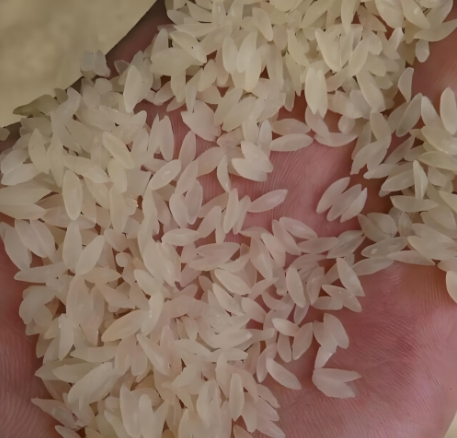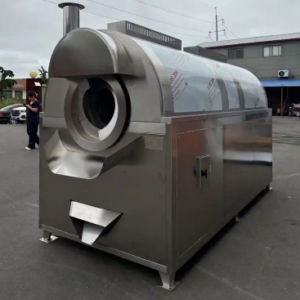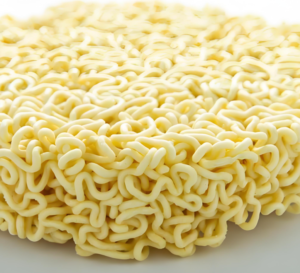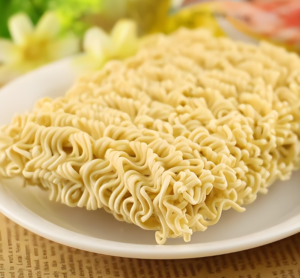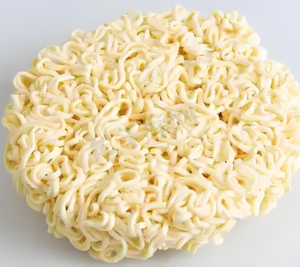<h1>Essential Equipment for Fortified Rice Production</h1>Fortified rice is a vital innovation in global nutrition, enhancing staple foods with essential vitamins and minerals to combat malnutrition. This article explores the key equipment required for producing fortified rice, targeting manufacturers, exporters, and B2B professionals in the foreign trade sector. By understanding these tools, businesses can improve efficiency, meet international standards, and tap into growing markets for nutrient-enhanced rice.
fortified rice production line
ToggleWhat is Fortified Rice?
Fortified rice involves adding micronutrients like iron, zinc, and vitamins A and B to regular rice grains. This process creates rice that looks and cooks like natural rice but delivers added health benefits. In regions with high rice consumption, such fortification helps address nutrient deficiencies without changing dietary habits.
The production method typically uses extrusion technology to mimic the shape and size of rice kernels. This ensures even distribution and minimal waste, making it ideal for large-scale operations. For B2B stakeholders, fortified rice represents a lucrative opportunity in export markets, especially in developing countries supported by organizations like the World Health Organization.
The Importance of Rice Fortification
Rice fortification plays a crucial role in public health, particularly in areas where rice is a dietary staple. It helps prevent conditions such as anemia and vitamin deficiencies, supporting sustainable development goals. From a business perspective, investing in fortification aligns with consumer demands for healthier products and regulatory requirements in international trade.
Key benefits include extended shelf life, improved marketability, and potential premium pricing. Exporters can leverage fortified rice to access government programs and aid initiatives, boosting profitability. However, success depends on using reliable equipment to maintain nutrient integrity and product quality throughout the supply chain.
Key Equipment for Fortified Rice Production
Producing fortified rice requires specialized machinery to handle premix preparation, extrusion, blending, and packaging. Each piece of equipment ensures precise nutrient addition, consistent output, and compliance with food safety standards. Below, we break down the essential tools for an efficient production line.
Extrusion Machines
Extrusion machines are the cornerstone of fortified rice production. They transform a mixture of rice flour, nutrients, and binders into kernel-shaped pellets that resemble natural rice. This equipment uses high heat and pressure to encapsulate micronutrients, preventing degradation during cooking.
For B2B applications, choose extruders with adjustable settings for different rice varieties and fortification levels. Models from reputable manufacturers offer capacities from 100 kg to several tons per hour, making them scalable for small exporters or large factories. Key features include automated controls for energy efficiency and minimal nutrient loss, which can reduce operational costs by up to 20%.
Mixing and Blending Equipment
Before extrusion, ingredients must be uniformly mixed to ensure even nutrient distribution. Mixing equipment, such as ribbon blenders or paddle mixers, combines rice flour with vitamin and mineral premixes. This step is critical for achieving the desired fortification ratio without clumping or inconsistencies.
High-quality blenders feature stainless steel construction for hygiene and ease of cleaning, adhering to international food safety regulations. In foreign trade, businesses should select models with variable speed options to handle different batch sizes, enhancing flexibility for custom orders. Proper blending can improve product uniformity by 30%, leading to higher customer satisfaction and repeat business.
Drying and Cooling Systems
After extrusion, fortified rice kernels need drying to remove moisture and prevent spoilage. Drying systems, including conveyor belt dryers or fluidized bed dryers, use controlled heat to achieve the right moisture content without damaging nutrients. Cooling systems then stabilize the product for packaging.
These systems are essential for maintaining shelf stability, especially in humid export markets. Energy-efficient models with heat recovery features can lower utility costs, making them attractive for cost-conscious B2B operations. Investing in advanced drying technology ensures compliance with standards like those from the Codex Alimentarius, facilitating smoother international trade.
Quality Control and Testing Devices
Quality control is non-negotiable in fortified rice production. Devices such as spectrophotometers and nutrient analyzers verify the accuracy of fortification levels and detect contaminants. These tools provide real-time data to adjust processes and ensure regulatory compliance.
For exporters, integrating automated testing equipment reduces human error and speeds up production. Portable models allow on-site verification during shipping, enhancing trust with global buyers. By prioritizing quality control, businesses can avoid recalls and build a reputation for reliability in competitive markets.
Packaging and Storage Solutions
Once fortified rice is produced, proper packaging protects it from moisture, light, and oxygen, preserving nutrient potency. Equipment like automated filling machines, vacuum sealers, and multi-layer bag systems are vital for maintaining product integrity during storage and transit.
In B2B contexts, opt for packaging solutions that support bulk exports, such as palletizers and labeling machines with barcode integration. These features streamline logistics and meet traceability requirements in regions like the EU and Asia. Effective packaging not only extends shelf life but also enhances branding opportunities for manufacturers.
Step-by-Step Process of Using Fortified Rice Equipment
The fortified rice production process involves several integrated steps, each relying on specific equipment. Here’s a breakdown to guide B2B professionals in setting up an efficient line.
- Ingredient Preparation: Start with milling rice into flour and measuring nutrient premixes using weighing scales and mixers.
- Mixing and Extrusion: Blend ingredients in a mixer, then feed the mixture into an extruder to form fortified kernels.
- Drying and Cooling: Pass extruded kernels through drying systems to reduce moisture, followed by cooling to prevent clumping.
- Blending with Regular Rice: Use blending equipment to mix fortified kernels with natural rice at ratios like 1:100 for even distribution.
- Quality Testing: Employ analyzers to check nutrient levels and safety before packaging.
- Packaging and Distribution: Finalize with packaging machines and store in climate-controlled facilities for export readiness.
This sequential approach minimizes downtime and maximizes yield, which is crucial for high-volume B2B operations. Integrating IoT-enabled equipment can further optimize the process, providing data analytics for predictive maintenance.
Challenges and Solutions in Fortified Rice Equipment
While fortified rice production offers significant advantages, challenges like high initial costs and maintenance needs can arise. Equipment downtime due to wear and tear may disrupt supply chains, impacting export schedules. Solutions include partnering with reliable suppliers who offer warranties and training programs.
Another issue is adapting equipment for different rice types, such as long-grain or basmati. Customizable machines with modular designs address this, allowing businesses to switch configurations quickly. In foreign trade, selecting equipment that meets ISO standards ensures seamless integration into global operations, reducing risks and enhancing competitiveness.
Frequently Asked Questions
Below, we address common queries from B2B professionals involved in fortified rice production.
What is the average cost of extrusion equipment for fortified rice? Extrusion machines typically range from $50,000 to $500,000, depending on capacity and features. Factors like automation and brand influence pricing, but long-term savings from efficiency often justify the investment.
How does fortified rice equipment ensure nutrient retention? Advanced extruders use controlled environments to encapsulate nutrients, minimizing exposure to heat and oxygen. Regular calibration and quality checks further maintain retention rates above 90%.
Can this equipment be used for other fortified foods? Yes, many machines are versatile and can adapt for products like fortified wheat or snacks. This multi-functionality makes them a smart choice for diversified B2B portfolios.
What maintenance is required for these systems? Routine checks every 3-6 months, including cleaning and part replacements, are essential. Manufacturers often provide guidelines to extend equipment life and prevent costly breakdowns.
Where can businesses source fortified rice equipment? Reputable suppliers in China, India, and Europe offer high-quality options. Look for exporters with certifications and case studies to ensure reliability for international trade.
Conclusion
In summary, fortified rice production relies on a combination of extrusion machines, mixing equipment, drying systems, quality controls, and packaging solutions to deliver nutritious, market-ready products. By investing in the right tools, B2B professionals can enhance operational efficiency, meet global demands, and contribute to public health initiatives. As the fortified rice market continues to grow, prioritizing high-quality equipment will be key to long-term success in foreign trade.

